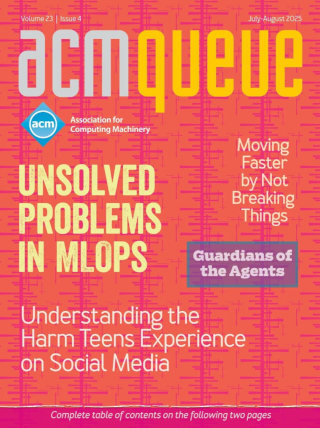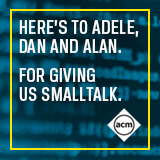
A Second Conversation with Werner Vogels:
The Amazon CTO sits with Tom Killalea to discuss designing for evolution at scale.
When I joined Amazon in 1998, the company had a single US-based website selling only books and running a monolithic C application on five servers, a handful of Berkeley DBs for key/value data, and a relational database. That database was called "ACB" which stood for "Amazon.Com Books," a name that failed to reflect the range of our ambition. In 2006 acmqueue published a conversation between Jim Gray and Werner Vogels, Amazon's CTO, in which Werner explained that Amazon should be viewed not just as an online bookstore but as a technology company. In the intervening 14 years, Amazon's distributed systems, and the patterns used to build and operate them, have grown in influence. In this follow-up conversation, Werner and I pay particular attention to the lessons to be learned from the evolution of a single distributed system, S3, which was publicly launched close to the time of that 2006 conversation.
The Time I Stole $10,000 from Bell Labs:
Or why DevOps encourages us to celebrate outages
If IT workers fear they will be punished for outages, they will adopt behavior that leads to even larger outages. Instead, we should celebrate our outages: Document them blamelessly, discuss what we've learned from them openly, and spread that knowledge generously. An outage is not an expense. It is an investment in the people who have learned from it. We can maximize that investment through management practices that maximize learning for those involved and by spreading that knowledge across the organization. Managed correctly, every outage makes the organization smarter. In short, the goal should be to create a learning culture?one that seeks to make only new mistakes.
Decentralized Computing
Feeding all relevant inputs to a central solver is the obvious way to tackle a problem, but it's not always the only way. Decentralized methods that make do with only local communication and local computation are sometimes the best way. This episode of Drill Bits reviews an elegant protocol for self-organizing wireless networks that can also solve a seemingly impossible social networking problem. The protocol preserves privacy among participants and is so simple that it can be implemented with pencil, paper, and postcards. Example software implements both the decentralized protocol and a centralized solver.
Kabin Fever:
KV's guidelines for KFH (koding from home)
Let me invite you to my next Zoom meeting on how to host Zoom meetings! As a devotee of mobile computing and remote work from my earliest days at university, I have, over time, developed a number of useful habits for maintaining a good and productive working rhythm, and I've found that many of these apply well to those of you who are newly working from home.
Differential Privacy: The Pursuit of Protections by Default:
A discussion with Miguel Guevara, Damien Desfontaines, Jim Waldo, and Terry Coatta
First formalized in 2006, differential privacy is an approach based on a mathematically rigorous definition of privacy that allows formalization and proof of the guarantees against re-identification offered by a system. While differential privacy has been accepted by theorists for some time, its implementation has turned out to be subtle and tricky, with practical applications only now starting to become available. To date, differential privacy has been adopted by the U.S. Census Bureau, along with a number of technology companies, but what this means and how these organizations have implemented their systems remains a mystery to many.
Battery Day:
A closer look at the technology that makes portable electronics possible
Tesla held its first Battery Day on September 22, 2020. The Tesla team didn't just look at one angle but all the angles: cell design, manufacturing, vehicle integration, and materials. If Tesla were to achieve 400 watt-hours per kilogram, a zero-emissions jet just might be on the horizon.
Everything VPN is New Again:
The 24-year-old security model has found a second wind.
The VPN (virtual private network) is 24 years old. The concept was created for a radically different Internet from the one we know today. As the Internet grew and changed, so did VPN users and applications. The VPN had an awkward adolescence in the Internet of the 2000s, interacting poorly with other widely popular abstractions. In the past decade the Internet has changed again, and this new Internet offers new uses for VPNs. The development of a radically new protocol, WireGuard, provides a technology on which to build these new VPNs.



